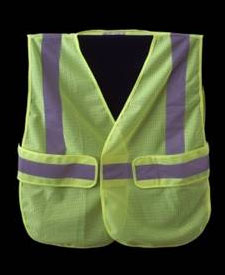Safety Requirements
Safety Requirements
Safety Briefings
Adopt a Highway volunteers are required to complete the following steps prior to EVERY litter cleanup activity:
- Read the Safety Briefing.
- Watch the Safety Briefing video.
- Acknowledge reading the Safety Briefing and watching the safety briefing video before entering ADOT right of way. Print the Adopt a Highway Volunteer Registration Form and return it to the designated ADOT office listed on your permit after your clean up.
Safety Vests
Volunteers are required to wear ANSI Class II Safety Vests, which meet the requirements for working on the right of way of any roadway open to public travel.


Allergies
If you have severe allergies to any insect, always carry appropriate medicine prescribed by your physician when outdoors.
For emergencies call 911 or Poison Control Center at 800.222.1222.
